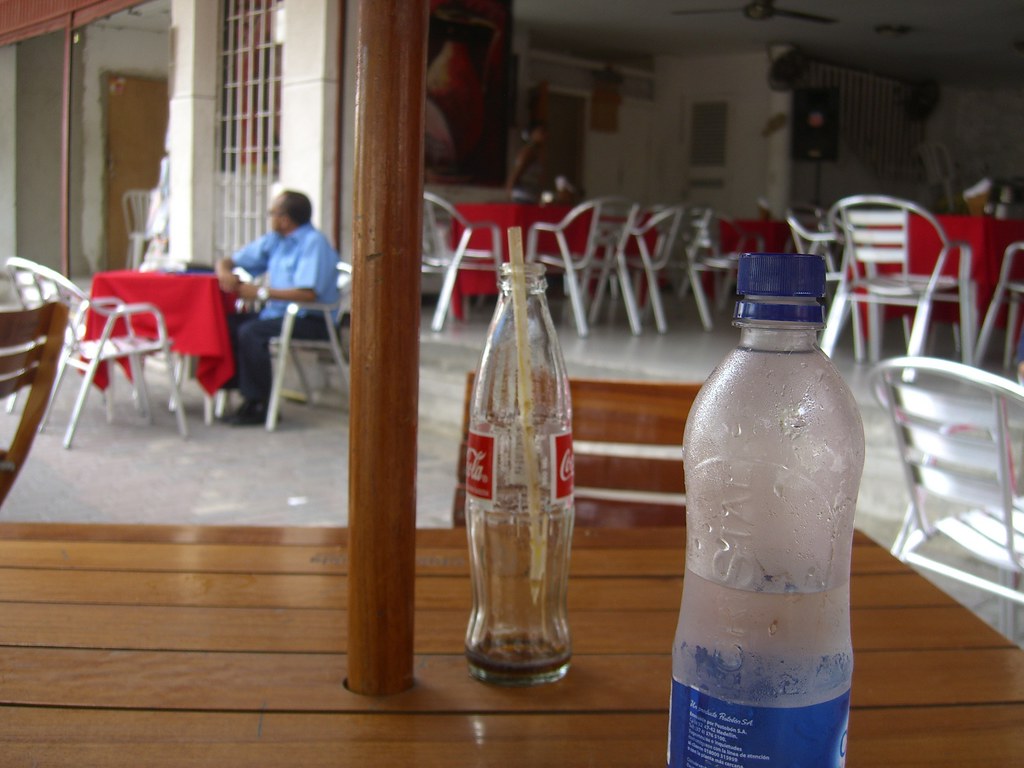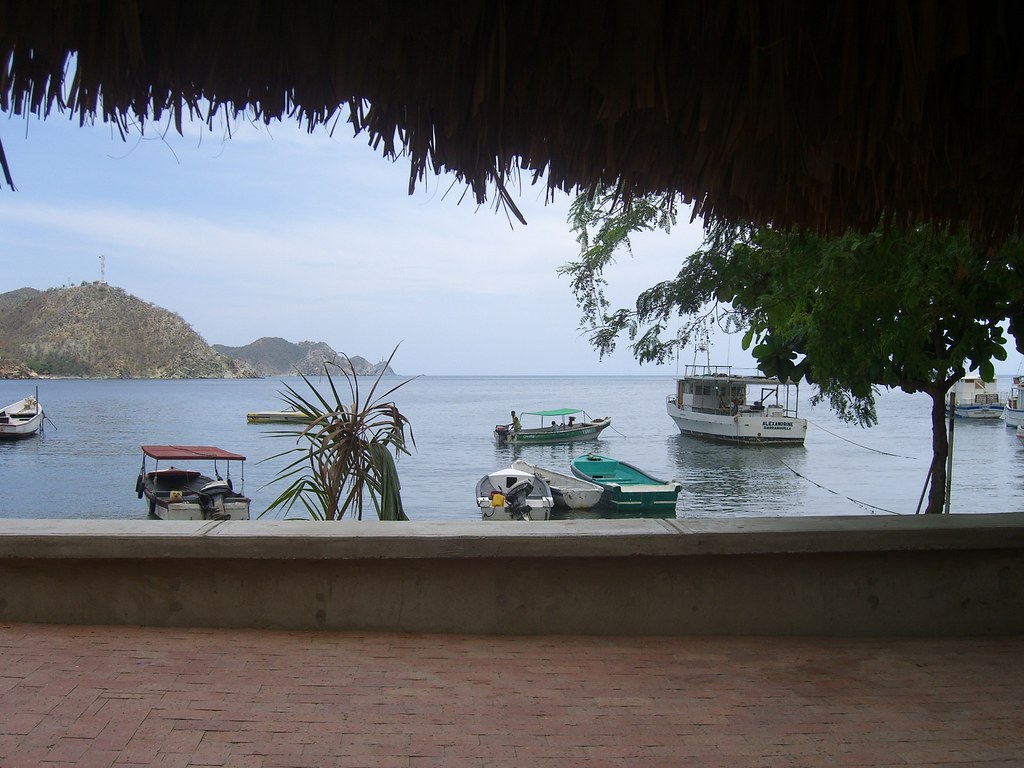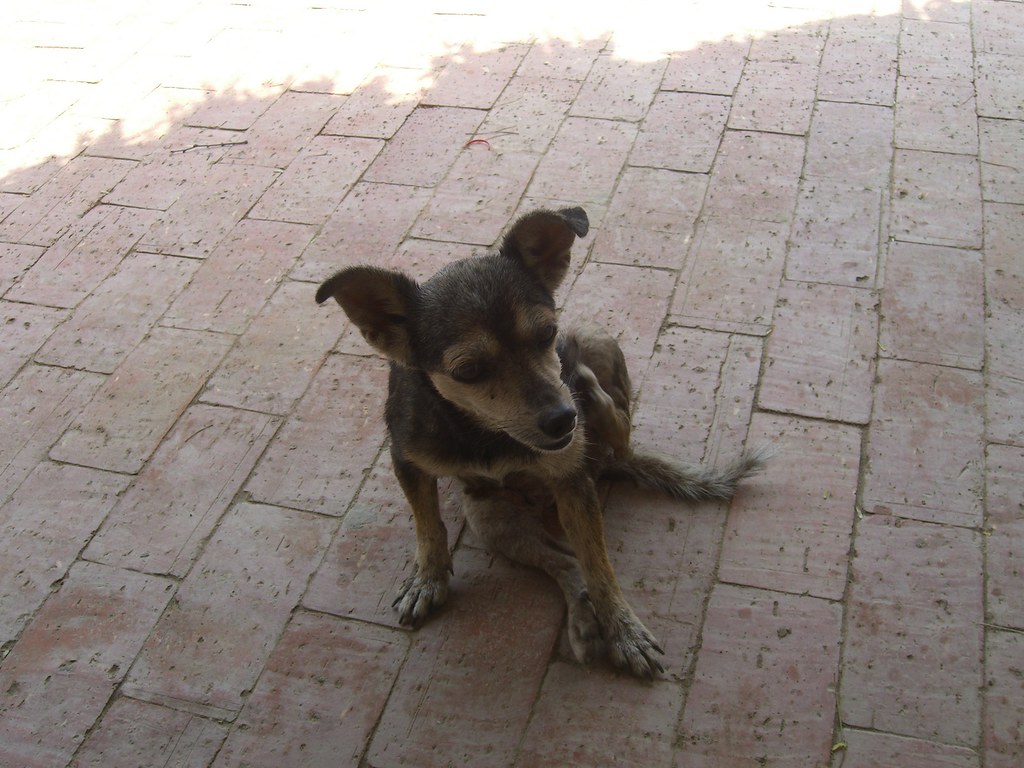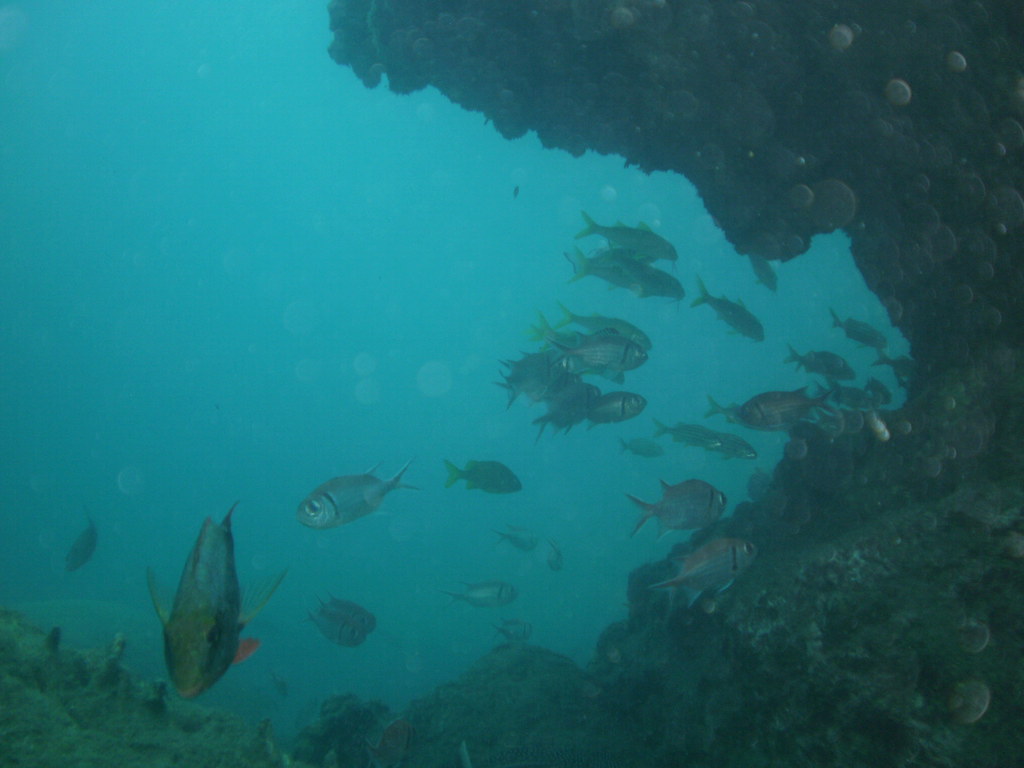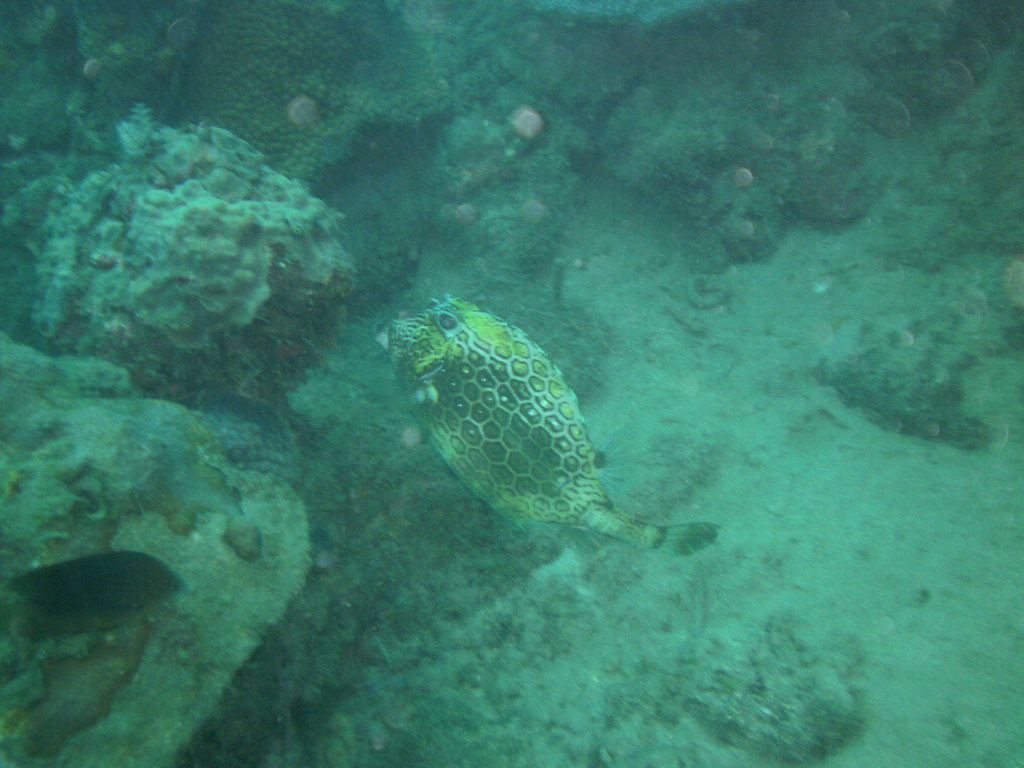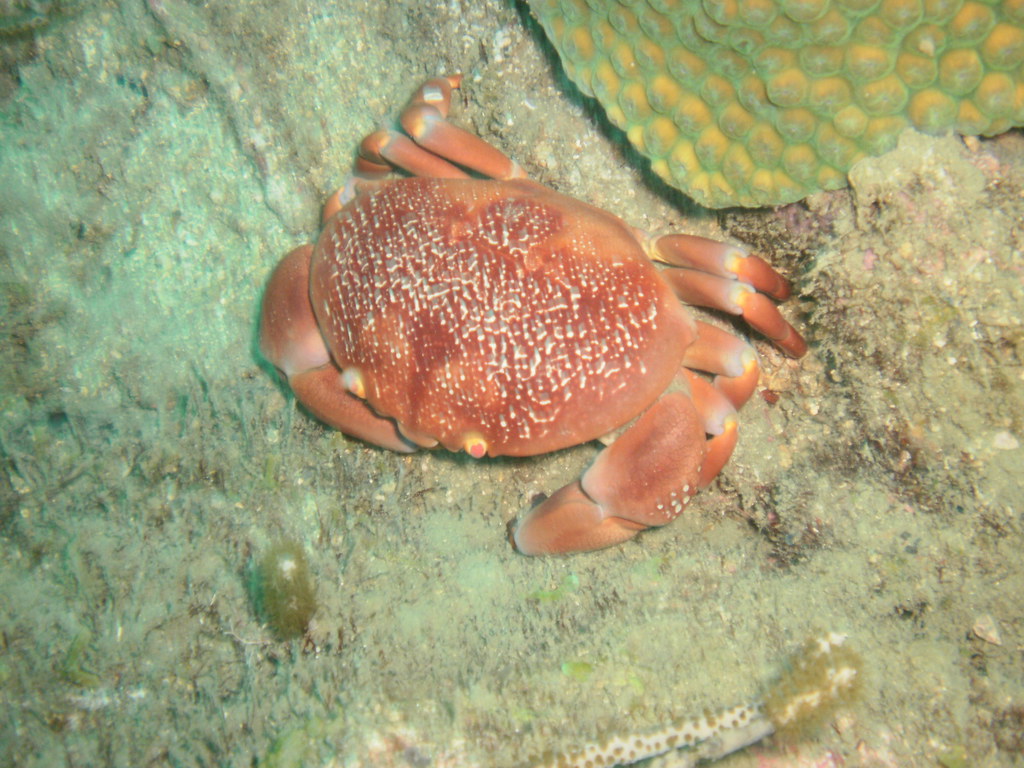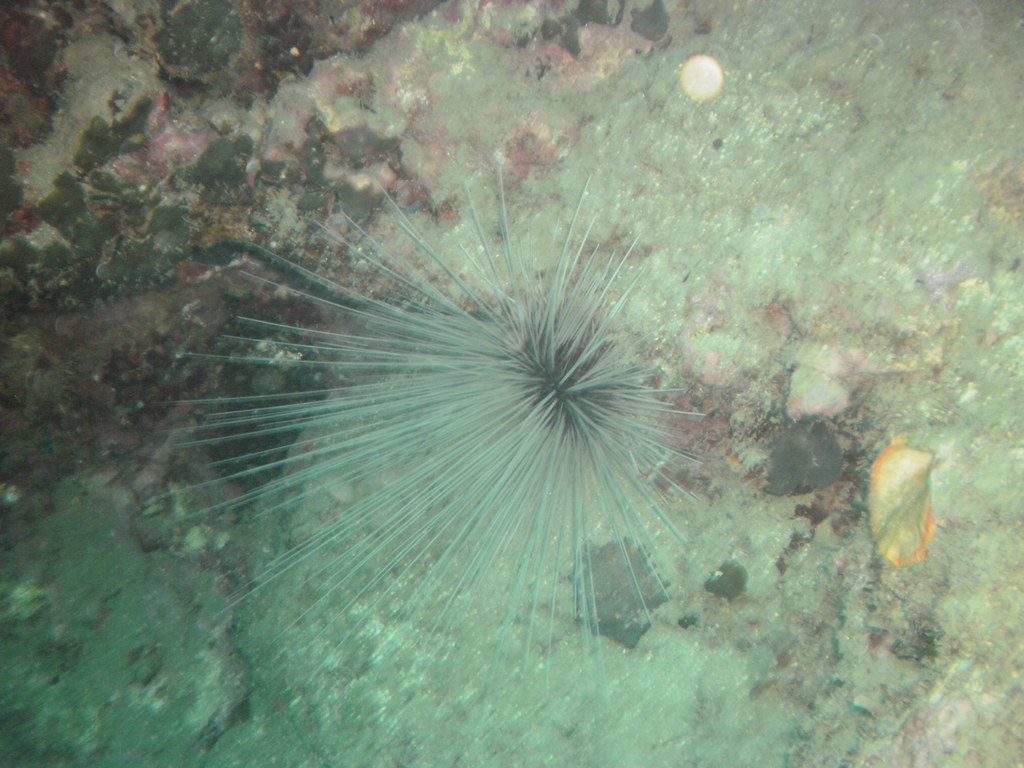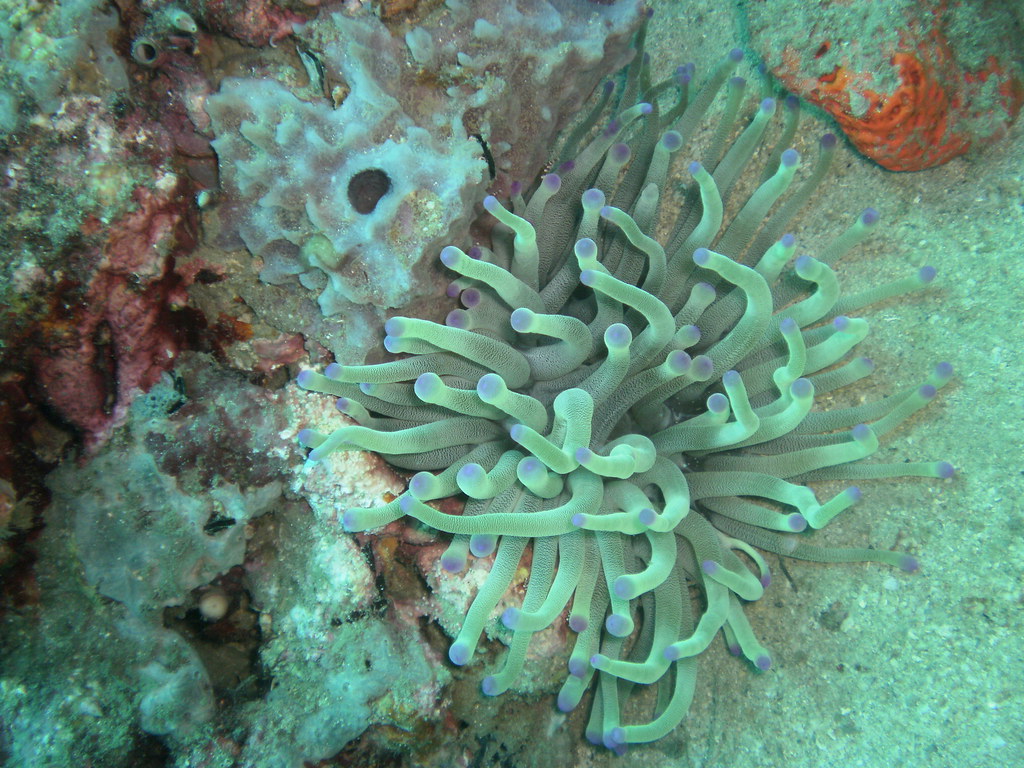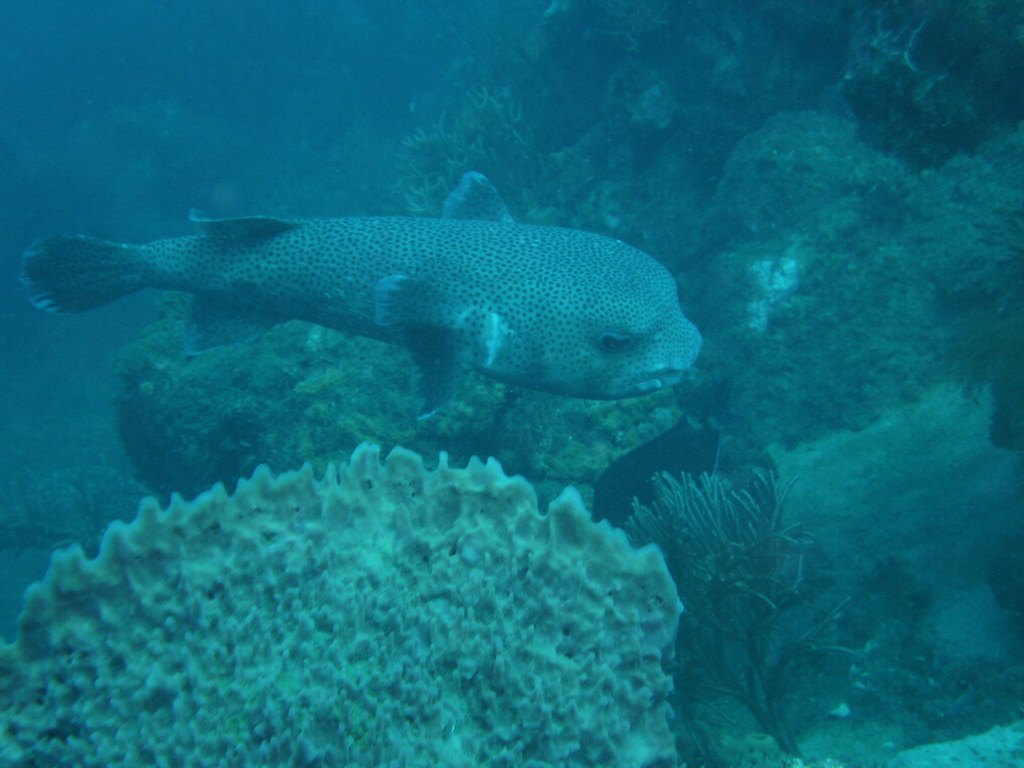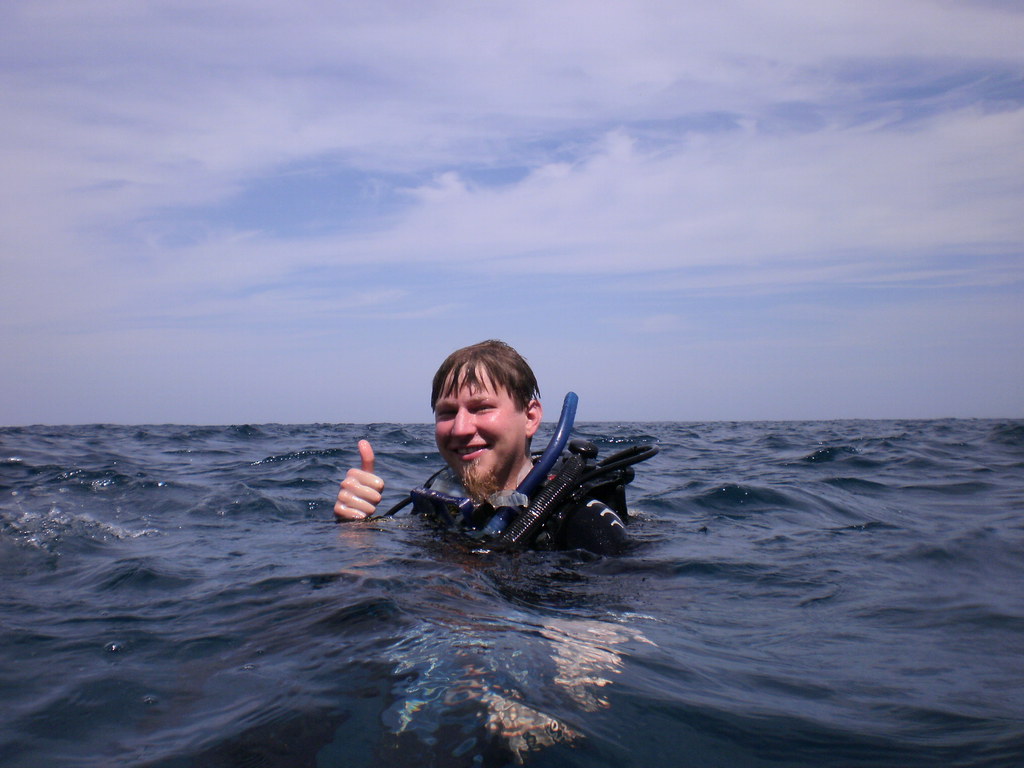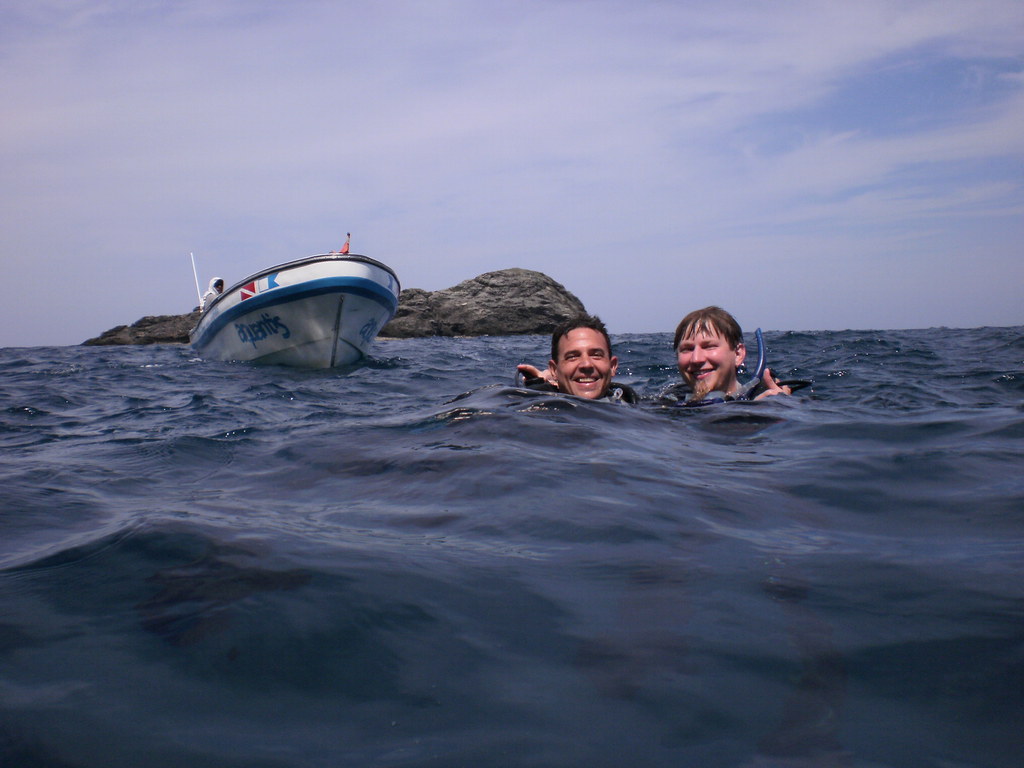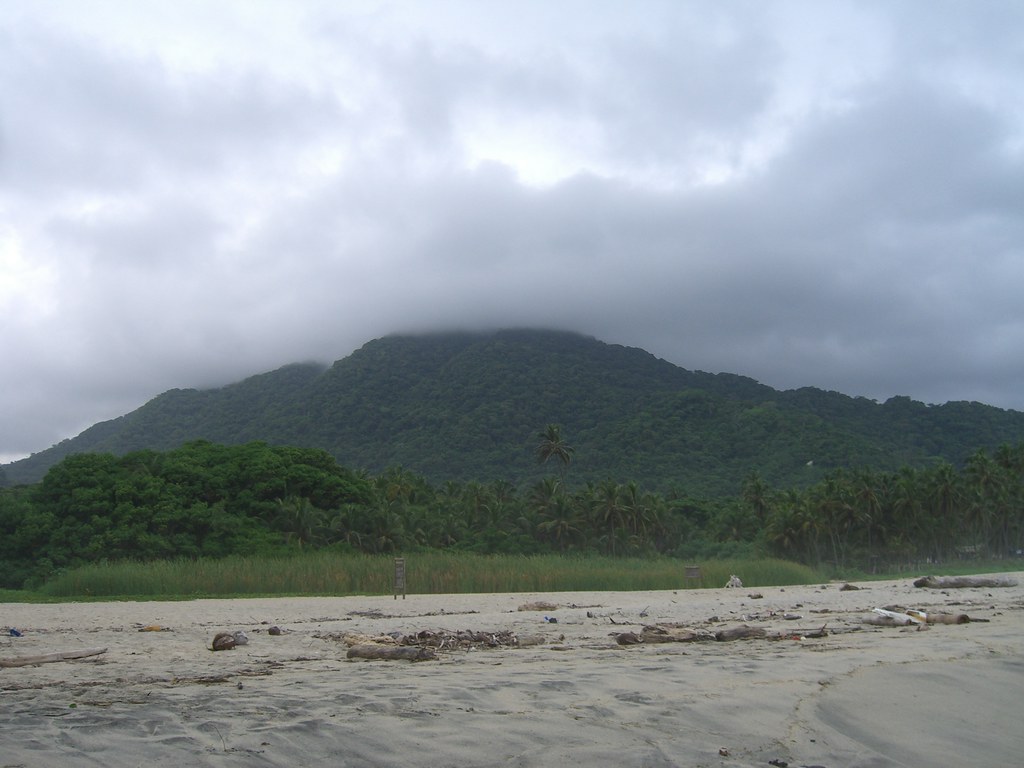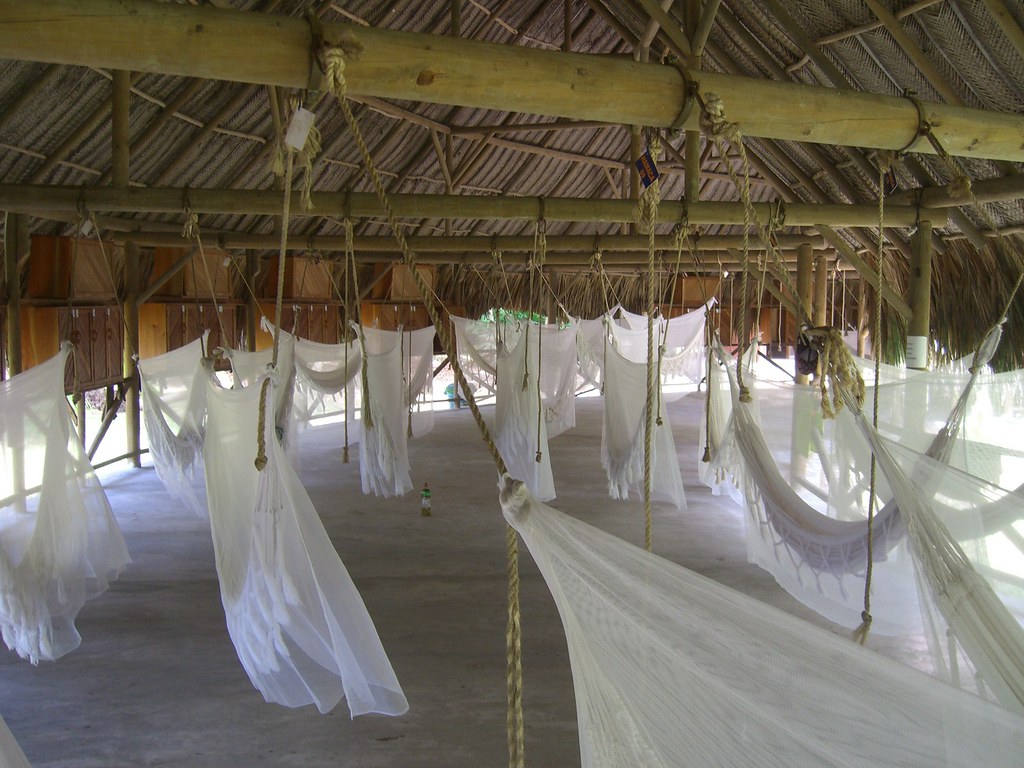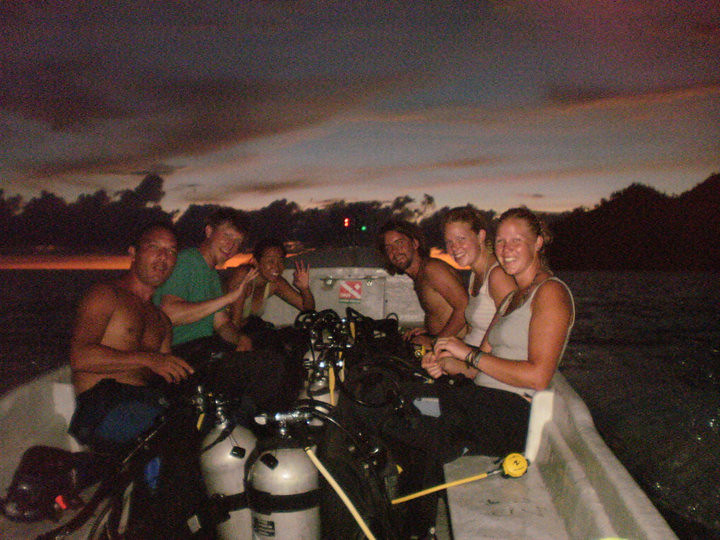Santa Marta, Taganga, and Parque Tayrona, Colombia
South America 2010
Colombia — Medellin, Santa Marta, Taganga, Parque Tayrona
Not done yet: Cartagena, Amazon, Lima, Cusco, Salkantay/Machu Picchu, Lake Titicaca, La Paz.

Tip: Use j/k to move up and down.

After a week in Medellín, Colombia, I took an overnight bus to Santa Marta, a 17 hour drive north to the Caribbean coast of Colombia. Unfortunately for me, I had been getting a little sick, and the harsh air conditioning on the bus sealed the deal. Why the buses are kept at 60°F when outside it's 90°F is beyond me; my Colombian busmates wearing winter jackets and blankets didn't seem to know either.
When I took a taxi into Santa Marta, I met with another Colombian idiosyncrasy — nobody has change. All I had to pay the 4.000 COP fare was a 20.000 COP bill. The taxi driver said he had no change, so he had to park with his flashers on while we ran over to ask at a couple stores/restaurants if they could change a 20. None had any or would give us any, so we had to get some drinks at a restaurant just to get some smaller bills. I wanted a water anyway, but I felt a bit bad for the taxi driver nervously eying his car and losing fares because he didn't have 16.000 in change.
It was fun talking to the taxi driver anyway and only took a few minutes. In conversations with others since, two theories have been put forward as to why nobody has change, with supporting anecdotes for each. First, some merchants might say they have no change with the hopes that you'll just let them keep the larger bill out of frustration. Second, some vendors might not want to keep very much cash on hand for fear that it will be stolen.
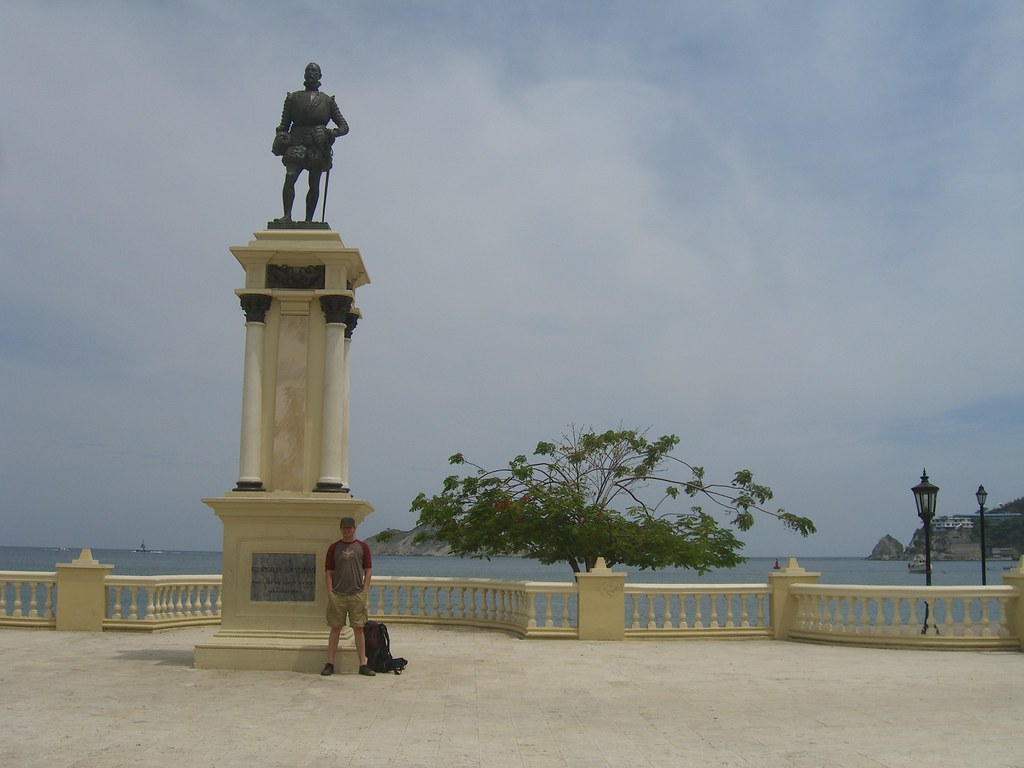
Santa Marta is a cute little town and — founded in 1525 — one of the oldest surviving European cities in South America.
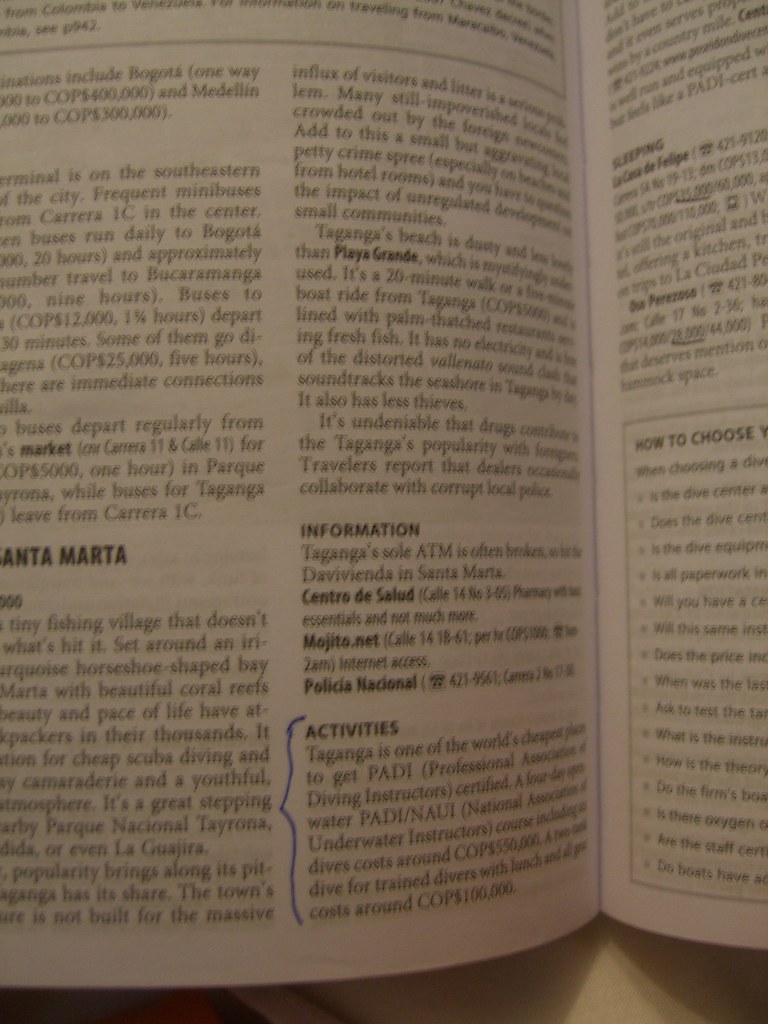
I didn't stay in Santa Marta long, but quickly made my way to Taganga, a tiny town one beach over from Santa Marta. My goal there: go scuba diving. As the highlighted text in my Lonely Planet guide says, Taganga is one of the cheapest places in the world to go diving and take PADI classes. Perfect.
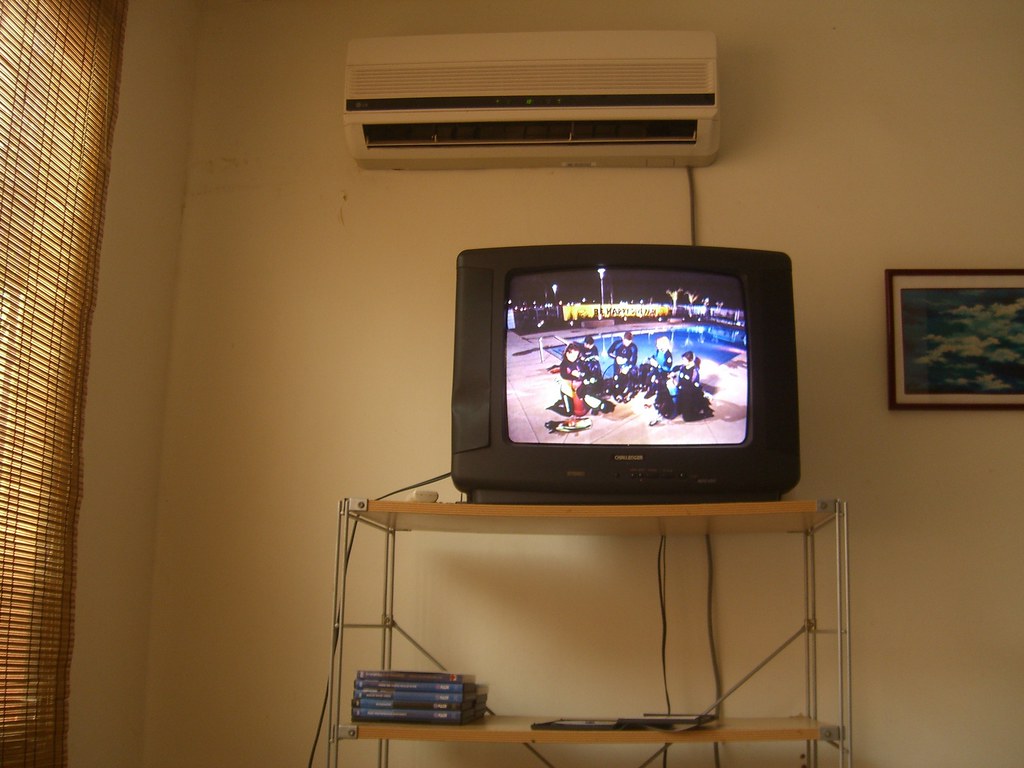
I was still a little sick from the epic bus ride in. This normally wouldn't have bothered me, except that you can't scuba dive if your ears are clogged, because the air behind your eardrum would be unable to equalize in pressure with the surrounding environment. So the only part of the class I could get started on was watching the introductory video, a 3.5 hour affair with at least a solid 20 minutes of content.
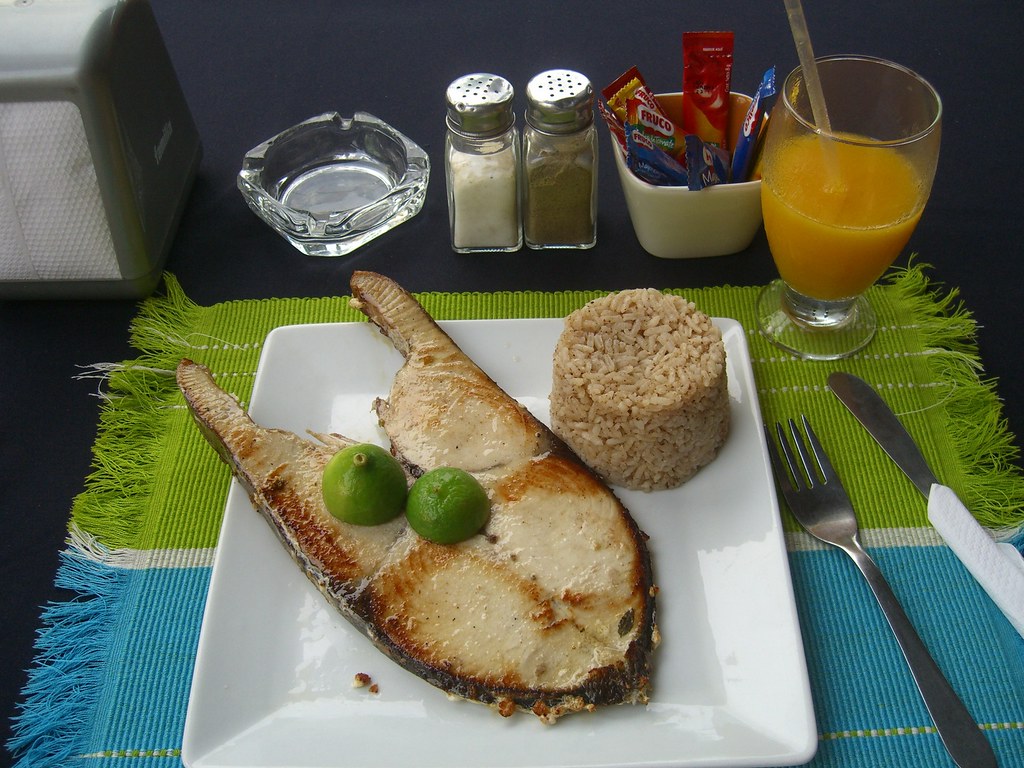
In Taganga I initially stayed at Casa Holanda, which often had great dinners: for example, this fish with coconut rice and mango juice.
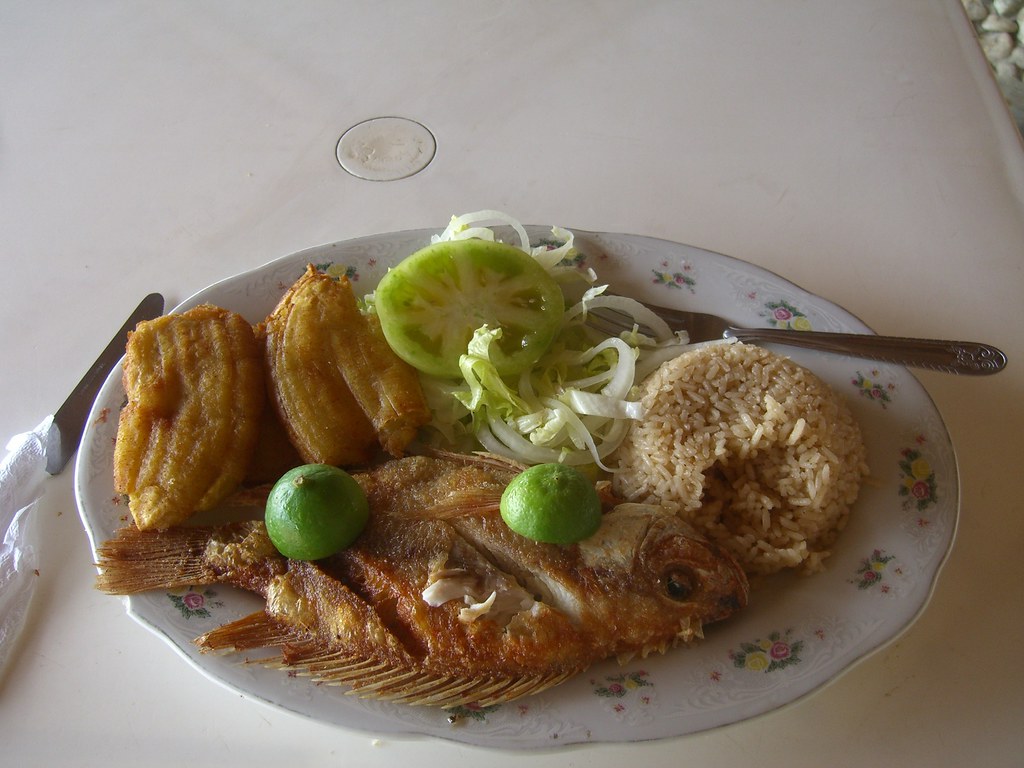
A very typical meal in Taganga: fried fish, fried plantains, salad, and coconut rice, served at one of the restaurants on the beach.

In the evening everyone hangs out on the beach, which proved an easy way to meet many colorful characters. In the background is the Taganga grocery store, which I later realized is just a liquor store that happens to sell cereal.
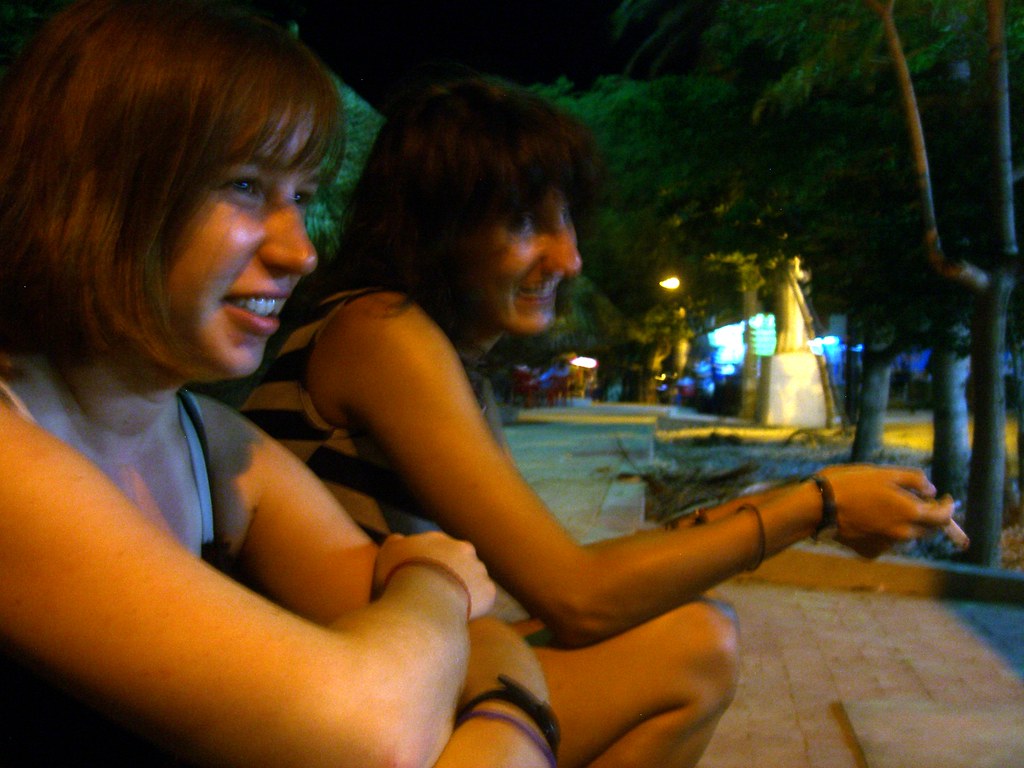
A few girls from Bern, Switzerland. For some reason I met many people from the northern Swiss-German speaking part of Switzerland, but only one from the southern French speaking part.
Of course, the real reason I went to Taganga was to go scuba diving. I took the PADI Open Water scuba course at Aquantis dive center for 580.000 COP, about USD $290. The course includes five dives and the necessary class time and materials for the PADI Open Water certification, which can be used to dive around the world. Unfortunately my camera doesn't enjoy diving as much as I do, so the only pictures are from a couple dives with the school's underwater camera.
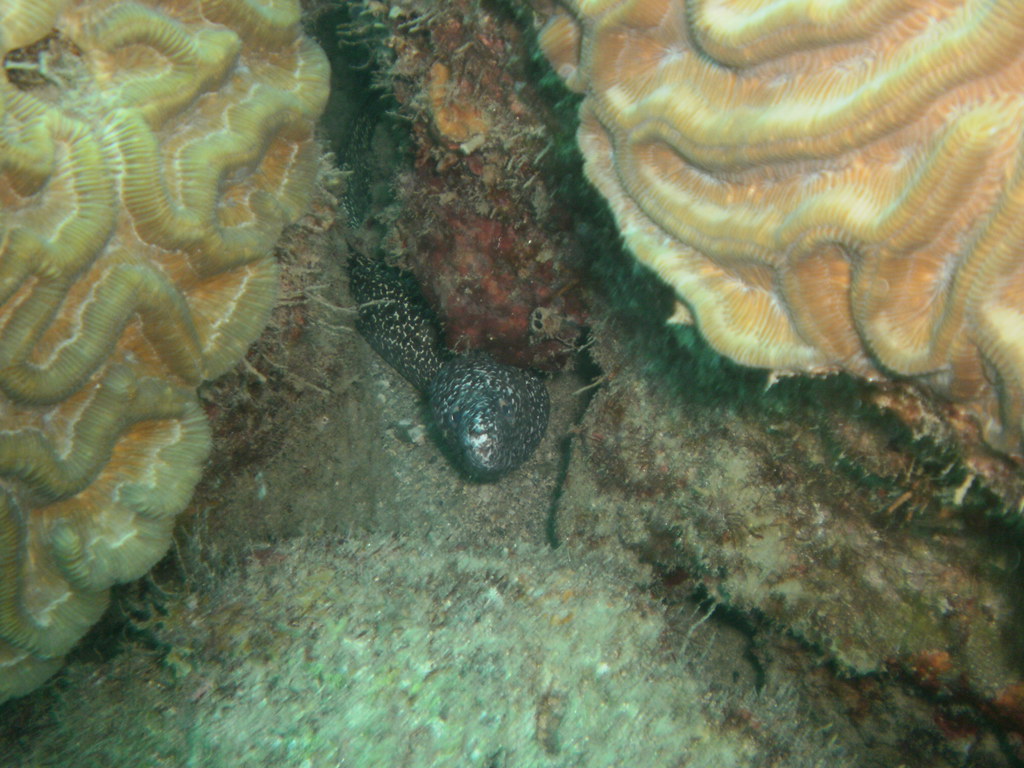
An eel and some brainy-looking coral. I learned that coral is closed during the day and only opens to feed at night.

I took the scuba class with one other student, Choco, a guy from Texas. Here Choco demonstrates the fin pivot, a maneuver where you pivot up and down only by changing your buoyancy. On a dive you set your baseline buoyancy by inflating and deflating your BCD (Buoyancy Control Device), and you control your differential buoyancy to ascend or descend simply by breathing.
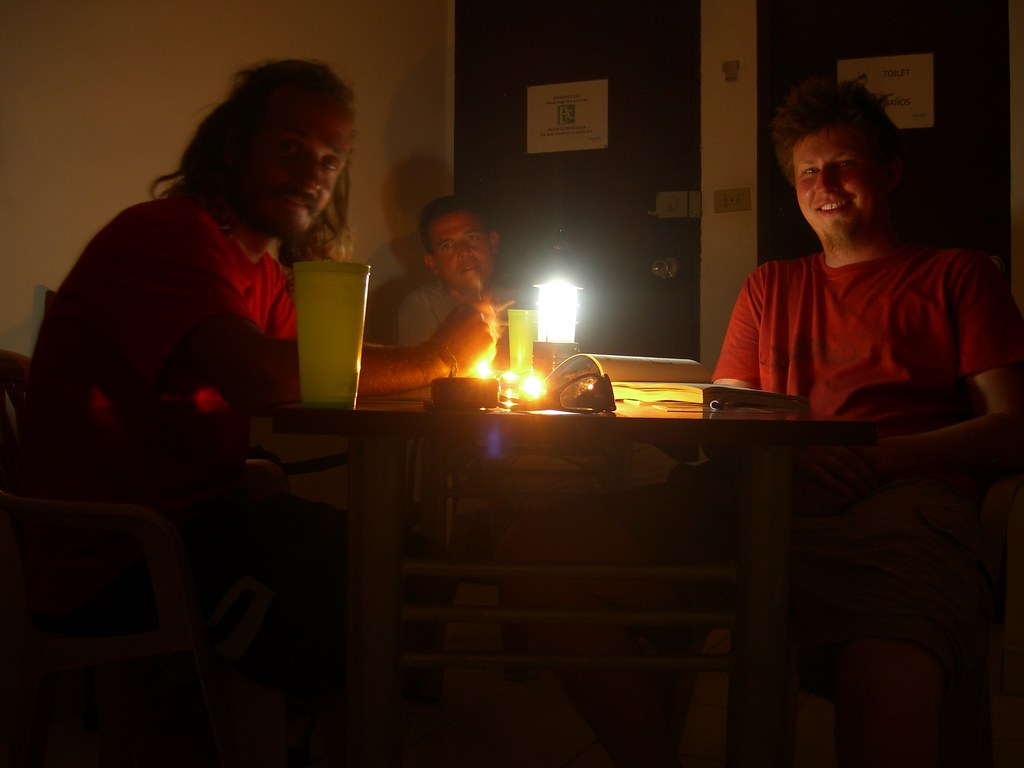
The PADI certification requires one to demonstrate both practical diving skills and knowledge of diving theory. Here our awesome diving instructor, Niko, endeavors to make the latter as interesting as possible, an effort only helped by the use of these candles during a power outage.
Fun diving note: to avoid decompression sickness ("the bends") after a dive, one must be careful to ensure that the level of dissolved nitrogen in the blood and other body tissues is not so high that it will come out of solution when returning to atmospheric pressure at the surface. The level of nitrogen in solution may be estimated by integrating an ODE describing the amount of nitrogen absorbed or released per time. Because iterations of the trapezoid rule would be fairly cumbersome to work out at 20 meters, this ODE has been boiled down to a set of three lookup tables printed on a plastic card called the Recreational Dive Planner (RDP). Alternately, most divers use more convenient wearable dive computers, which measure one's depth and constantly integrate this equation to provide an estimate of the amount of nitrogen dissolved at any given time. Dive computers are also preferred to the lookup tables because, not suffering from large quantization errors, they are able to allow for longer dives.
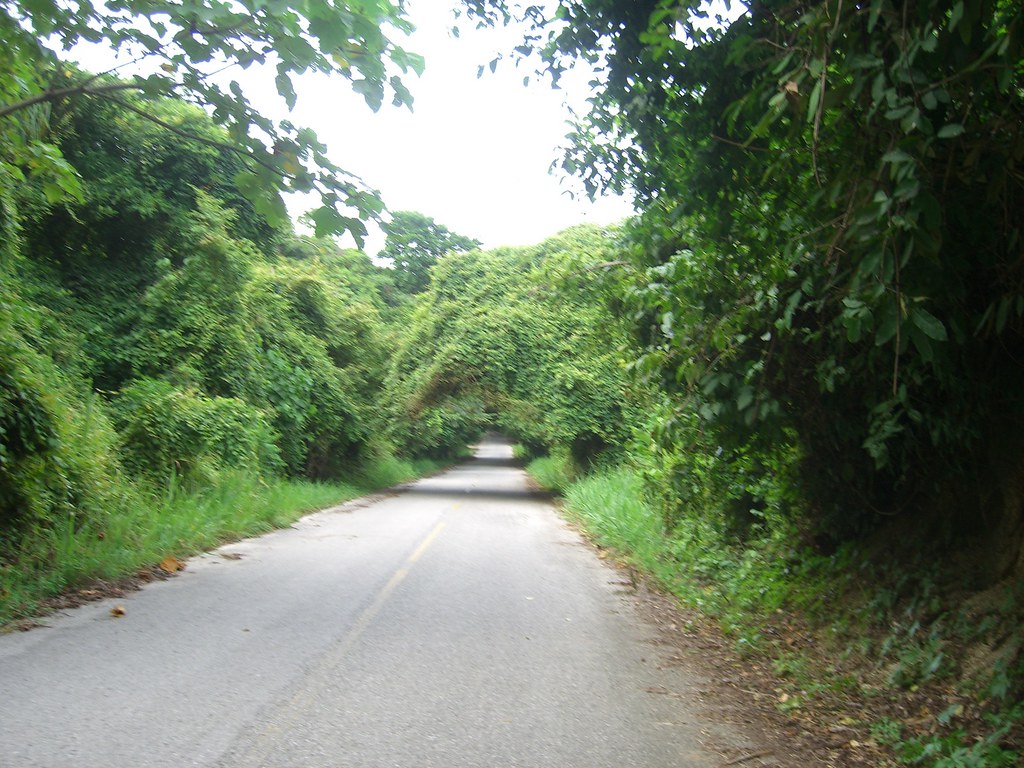
After passing the Open Water test, Choco and I both decided to head to nearby Parque Tayrona.

Hiking was fun, but riding horses down the mountains to the beach was more fun. Especially because the horses were constantly running to try to be in front.
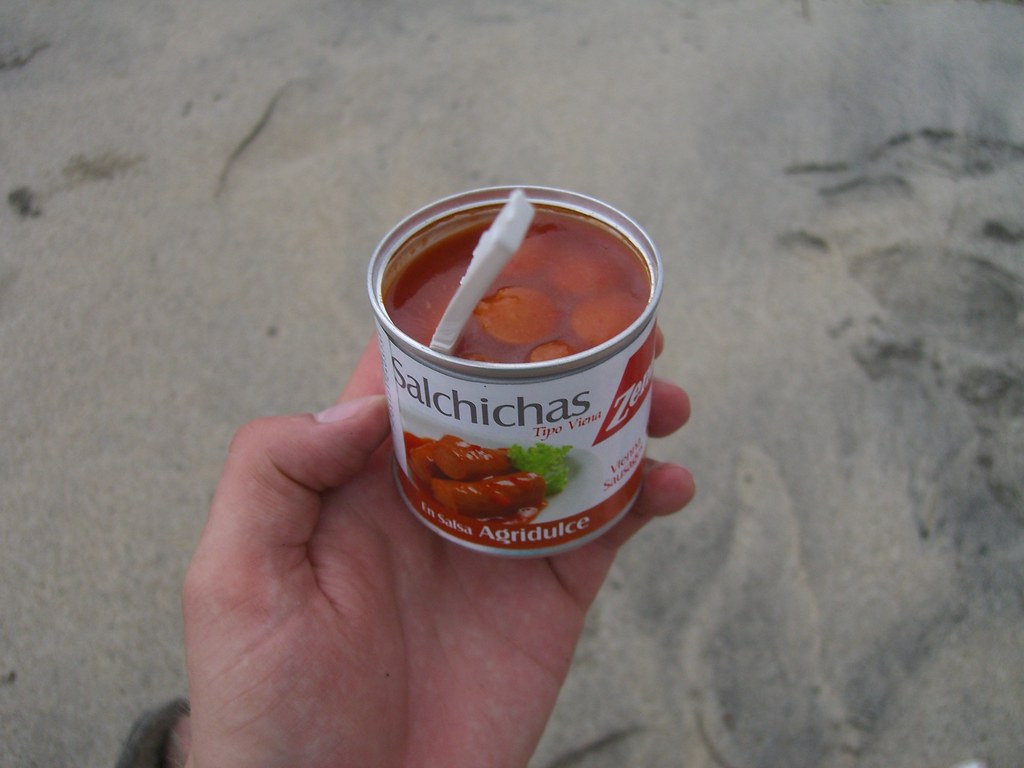
Hearing that food in Parque Tayrona was scarce and expensive, we brought some food from the grocery store. My favorite was this can of Vienna sausages in some red sauce best left unknown.
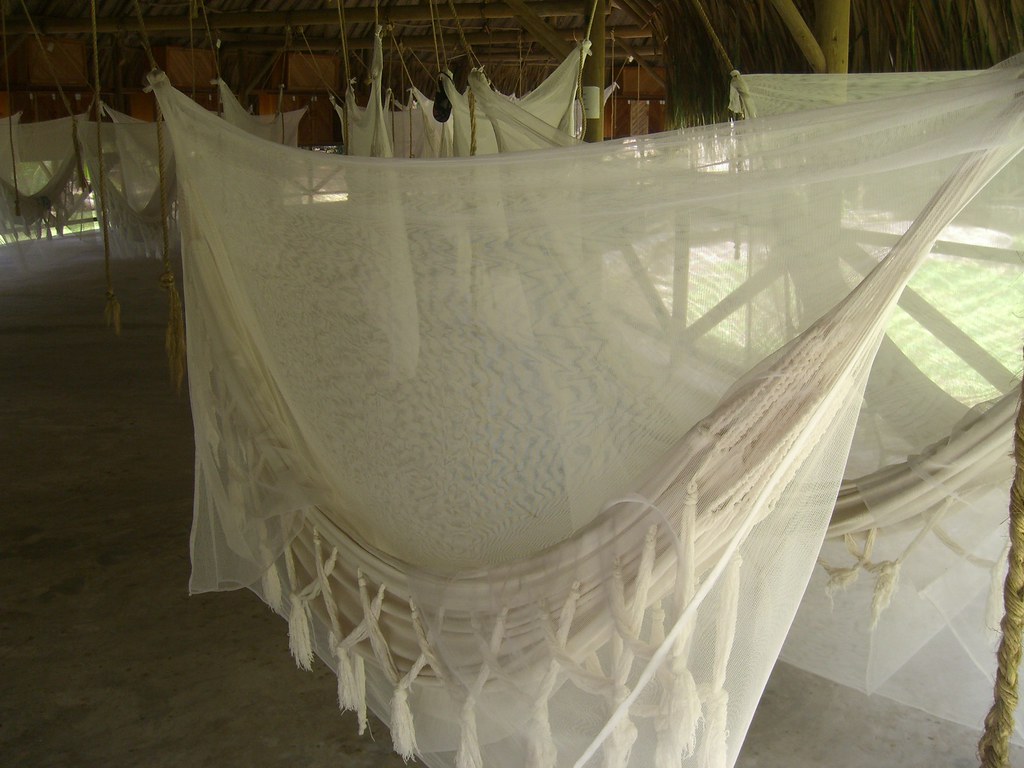
The hammocks were nice enough to allow me to join their colony for the night, and with far more comfort than I had imagined.

Also: one day on the beach this happened, forcing me to walk a couple miles wearing my shirt where my wayward bathing suit should have been and, more problematically, nothing where my shirt should have been. Oh, I also simultaneously lost my sunscreen, the combination resulting in my worst sunburn of the trip (yet).

Taxi ride through part of Parque Tayrona, memorable because I couldn't decide which was funnier: the fact that driving through rivers in taxis was completely foreign to me, or the fact that any of the obvious Oregon Trail references would be completely foreign to the taxi driver.
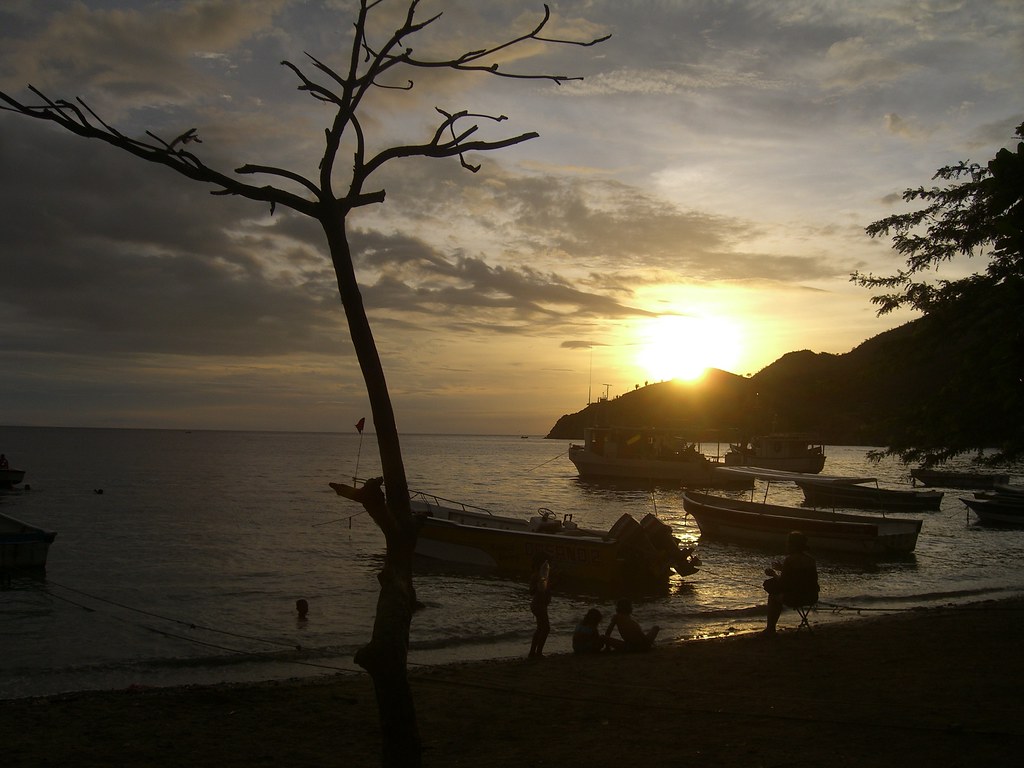
Back in Taganga, I decided that no amount of sightseeing in the next city would be more fun than doing some more scuba diving, so I decided to stay a few more days and take the PADI Advanced Open Water course. One of the lessons I could have learned anywhere, but didn't until under the simplified tutelage of long-term travel, is that when a hankering for something pops up, nothing stops you more than yourself.
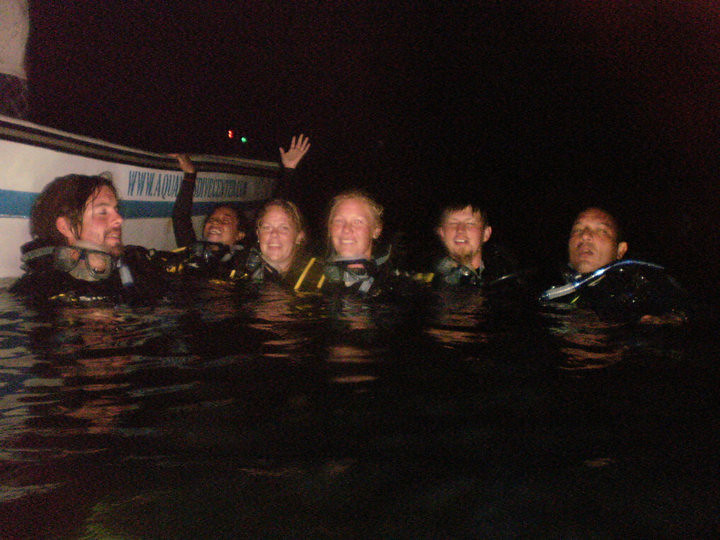
Turns out being 60 feet underwater with nothing but an impotent flashlight is exactly as weird and scary as it sounds.
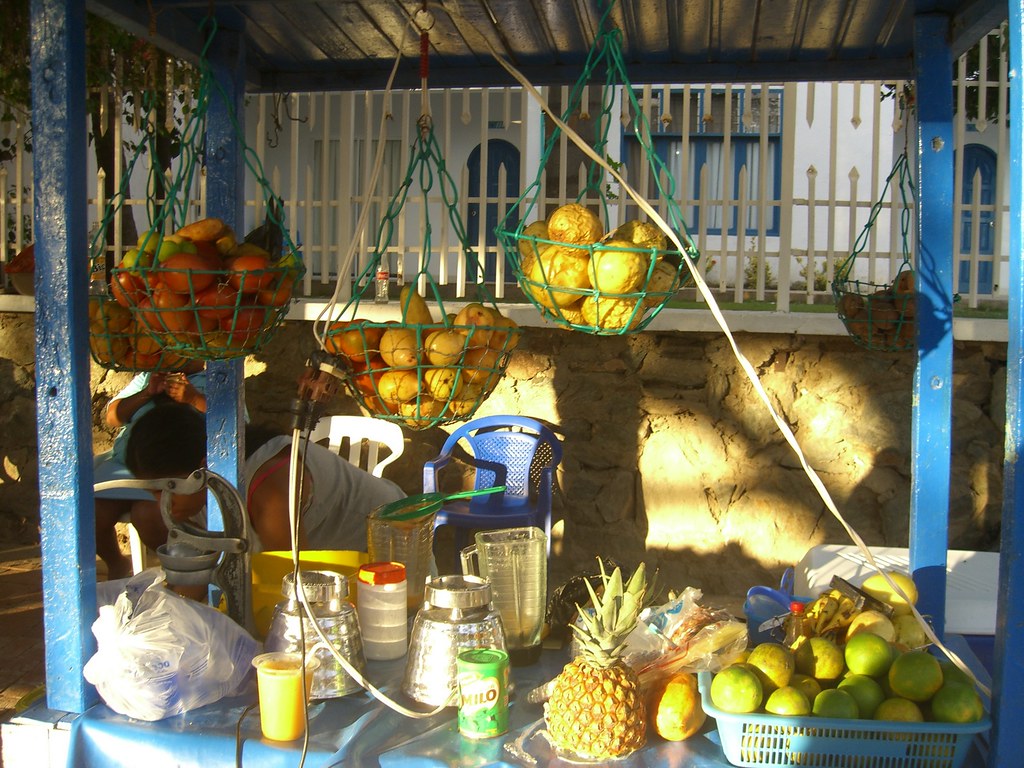
One of the ubiquitous jugo fresco (fresh juice) stands around Colombia. You tell them what to put in the blender, and USD $1 later it's yours.

At some point I moved to La Casa de Felipe to save some money, and I couldn't have been happier. Among other things, they have a heavenly third floor shaded rooftop patio with hammocks that looks over the town, mountains, and ocean.
